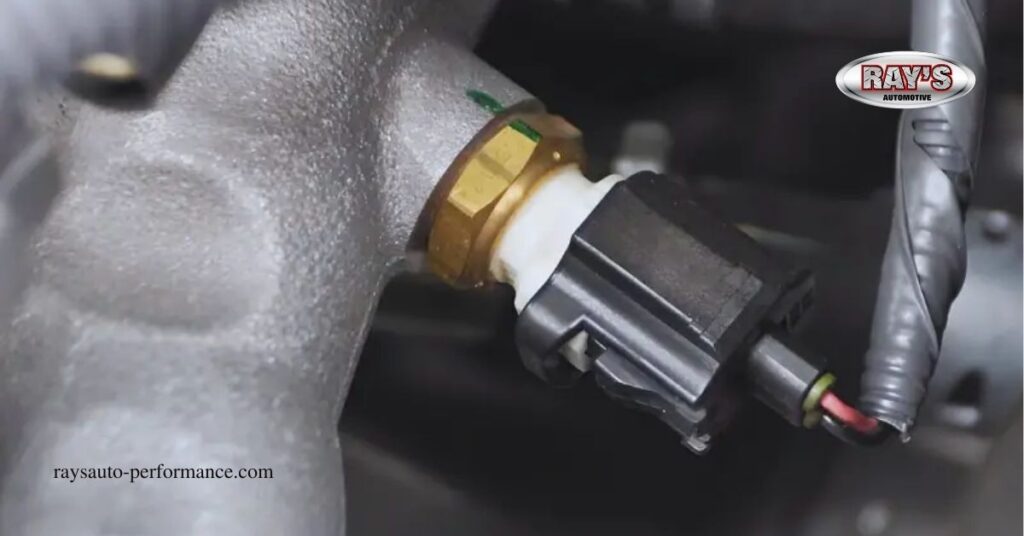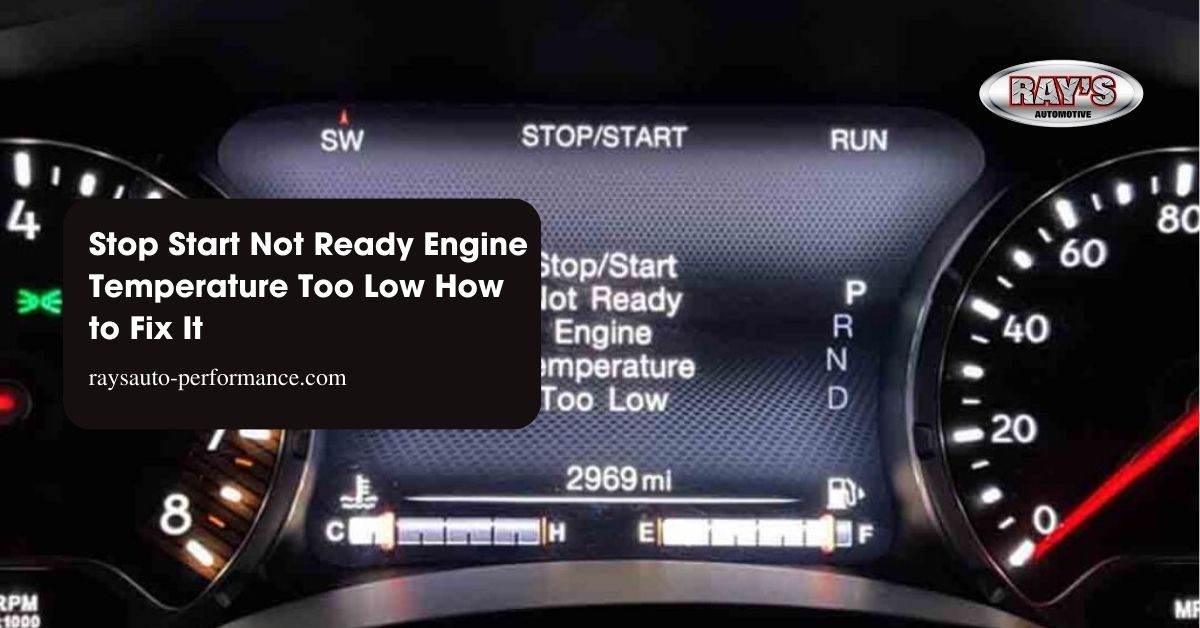If you’ve ever faced the frustrating “stop start not ready” message due to low engine temperature, you know how inconvenient it can be. This issue not only disrupts your driving experience but can also lead to further complications if left unaddressed. Understanding the underlying causes and answers can save you time and money while keeping your vehicle running smoothly.
Understanding Stop Start Systems

Stop start systems play a crucial role in improving fuel efficiency and reducing emissions. These systems automatically turn off the engine when the vehicle is stationary and restart it when you press the accelerator. You’ll notice a reduction in fuel consumption, particularly in urban driving conditions.
When facing the “stop start not ready” message, low engine temperature frequently causes this issue. The engine needs to reach a exact temperature before the stop start feature activates. If the engine doesn’t warm up adequately, the system prevents operation to protect components and ensure optimal performance.
Familiarizing yourself with the components involved in this system is important. The battery must be in good condition, as it provides the necessary power during stop time. Sensors also monitor engine conditions, including temperature, to determine when restarting can occur.
Relying on a well-functioning thermostat is essential, as it controls the engine’s temperature. If the thermostat malfunctions, it may lead to inadequate heating, causing the stop start system to remain inactive. Also, maintaining coolant levels optimally can promote efficient engine operation.
You might want to check error codes using an OBD-II scanner for further diagnostics. These codes can reveal any underlying issues hindering the engine’s performance. Once you address the low temperature problem, the stop start system should resume its functions.
Common Issues with Engine Temperature

Low engine temperatures can lead to several problems, affecting vehicle performance and functionality. Understanding these issues helps you make informed decisions to address them effectively.
Signs of Low Engine Temperature
You may notice certain signs that indicate low engine temperature. First, your vehicle’s dashboard might display a warning light or message related to engine temperature. Another sign includes poor engine performance, where the engine feels sluggish or unresponsive. Also, you could find that the heating system in your car takes longer to produce warm air. Inconsistent readings from the temperature gauge can also signal that the engine isn’t reaching optimal temperatures.
Impact on Stop Start Functionality
Low engine temperatures directly impact the stop start system. This feature relies on the engine reaching a exact temperature to activate successfully. If the engine remains too cool, the system won’t engage, leading to your “stop start not ready” message. Besides, diminished fuel efficiency occurs when the system can’t operate as intended. You might also experience increased emissions due to continuous engine operation instead of shut-off during stops. Addressing the underlying issues that cause low engine temperatures ensures smooth functionality of the stop start feature.
Diagnosing the Problem

Understanding the root cause of low engine temperature is essential for addressing the “stop start not ready” message. Proper diagnostics helps ensure your engine operates efficiently.
Tools Needed for Diagnosis
You’ll require a few key tools for effective diagnosis. An OBD-II scanner helps retrieve error codes that point to exact issues. A digital thermometer enables accurate temperature readings. Use basic hand tools, such as wrenches and screwdrivers, for checking and replacing faulty components. Finally, having a multimeter assists in testing electrical parts, ensuring accurate readings.
Steps to Check Engine Temperature
Begin by connecting the OBD-II scanner to your vehicle’s port. Retrieve any diagnostic trouble codes that might indicate problems with the engine’s temperature. Next, check the coolant temperature using a digital thermometer; exact readings should align with the manufacturer’s specifications. Inspect the thermostat for proper function by observing if it opens and closes correctly within the expected temperature range. If the coolant temperature sensor appears faulty, replace it to ensure accurate readings. Finally, verify the cooling system for issues such as trapped air or a malfunctioning radiator fan, which can contribute to low temperatures.
Solutions to Fix Low Engine Temperature
Addressing low engine temperature can significantly enhance vehicle performance and ensure your stop start system operates efficiently. Here are key steps to follow.
Checking Coolant Levels
Make sure your coolant levels are adequate. Insufficient coolant can hinder the engine from reaching its optimal temperature. Regularly check these levels, and top off as necessary to prevent potential issues. A well-maintained coolant system contributes to a properly functioning engine. If you notice levels dropping frequently, inspect for leaks that could indicate a more serious problem.
Inspections of Thermostat and Sensors
Inspect the thermostat thoroughly. If the thermostat’s stuck open, excessive coolant flows into the engine, keeping it from warming up properly. A simple test involves starting the engine and letting it idle for 10-20 minutes. If the lower radiator hose heats up right away, the thermostat is likely stuck open. Heating the thermostat in hot water can also determine its functionality. If it doesn’t open at the specified temperature, replacement is necessary.
Conversely, a stuck closed thermostat restricts coolant flow, preventing the engine from reaching the desired temperature. In either case, faulty thermostats impede engine performance. Sensors also play a crucial role; damaged or malfunctioning sensors can provide inaccurate readings, leading to further complications. Regularly check and replace any unreliable sensors to ensure accurate monitoring of engine conditions.
Preventative Measures

Maintaining optimal engine temperature prevents issues with stop start systems. Implementing regular checks and practices enhances engine performance.
Regular Maintenance Tips
Conduct routine inspections of the thermostat to ensure it functions correctly. Check coolant levels regularly; low coolant can prevent engine warming. Replace coolant as needed, typically every two years or according to the manufacturer’s guidelines. Inspect hoses for leaks or wear, since damaged hoses can lead to coolant loss. Clean radiator fins, as debris can block airflow and inhibit temperature regulation. Schedule professional maintenance for a comprehensive cooling system check.
Importance of Monitoring Engine Health
Regularly monitoring engine health aids in the early detection of potential issues. Use an OBD-II scanner to check for error codes, which can provide valuable insights into engine performance. Pay attention to dashboard warning lights; they often signify underlying problems. Track engine temperature readings consistently, as fluctuations can indicate malfunctioning components. Prioritizing these practices enhances overall vehicle reliability and efficiency, ensuring your stop start system operates smoothly.
Conclusion
Addressing low engine temperature is vital for the proper functioning of your vehicle’s stop start system. By understanding the causes and implementing the answers outlined, you can enhance your engine’s performance and efficiency. Regular maintenance and timely inspections will not only prevent future issues but also save you time and money in the long run.
Stay proactive by monitoring your engine’s health and utilizing tools like an OBD-II scanner. This way, you’ll ensure your vehicle runs smoothly and the stop start feature operates as intended. Remember that a well-maintained engine contributes to better fuel efficiency and reduced emissions, making your driving experience more enjoyable.
Frequently Asked Questions
What does “stop start not ready” mean?
The “stop start not ready” message indicates that your vehicle’s stop start system cannot activate, often due to low engine temperature. This causes inconvenience as the system is designed to improve fuel efficiency by turning off the engine when stationary.
Why is low engine temperature a problem?
Low engine temperature can prevent the stop start system from engaging, leading to poor fuel efficiency and increased emissions. It can also indicate underlying issues that may affect overall engine performance.
How can I check my engine temperature?
You can check your engine temperature using an OBD-II scanner to retrieve error codes, a digital thermometer to measure coolant temperature, or by observing dashboard gauges for abnormal readings.
What tools do I need to diagnose low engine temperature issues?
Essential tools include an OBD-II scanner to check for error codes, a digital thermometer for accurate temperature readings, and basic hand tools for inspecting and replacing faulty components.
What are common signs of low engine temperature?
Common signs include warning lights on the dashboard, poor engine performance, delayed heating system response, and inconsistent temperature gauge readings. These can indicate issues affecting engine operation and the stop start system.
How can I fix low engine temperature issues?
To fix low engine temperature issues, check and maintain coolant levels, inspect the thermostat for functionality, and ensure engine sensors are working properly. These steps can help optimize engine temperature.
How can I maintain optimal engine temperature?
Maintain optimal engine temperature by routinely inspecting the thermostat, regularly checking and replacing coolant, and monitoring engine health using an OBD-II scanner. Paying attention to warning lights and engine readings is also crucial.

